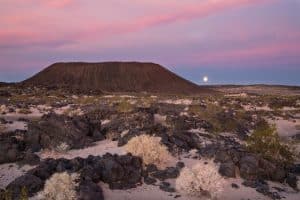Here’s some anecdotal evidence supporting the economic arguments for national monument designation.
Two years ago today, President Barack Obama created three new national monuments in the California desert: called Mojave Trails, Sand to Snow and Castle Mountains. Supporters held a community event to celebrate, noting that tourism to the area has increased significantly, as people come to see Joshua Tree National Park and then, go on to explore the new monuments.
Then there’s the Desert Renewable Energy Conservation Plan.
Under Zinke, the Bureau of Land Management recently filed a notice of intent to reopen the Desert Renewable Energy Conservation Plan, which sets aside land for conservation, recreation and energy development. “Lands that were set aside for conservation may now be open to inappropriate uses like mining and renewable-energy development, when there was already a consensus on areas where those sorts of uses would be appropriate,”
Another example of Trumpling the interests of locals in favor of reducing the “burdens on all domestic energy development.” Another case where the recreation industry (and others) will have to battle the resources of the energy industry (instead of working with the industry as they did in DRECP). Who is your money on?

Anecdotal indeed. The linked article provides zero evidence or details of increased visitation. I did find official visitation numbers for Joshua Tree NP, which show definite increases: https://www.nationalparked.com/joshua-tree/visitation-statistics
I could not find data on monument visitation, or how many people went to monuments after visiting the NP, or how many were influenced to trek to Joshua Tree because of new monuments. Based solely on the numbers, I hypothesize a general upward trend which stalled during the great recession before increasing rapidly starting in 2014, with an added boost from the 2016/17 wildflower “superblooms” (couldn’t find official 2017 numbers, but spring visitation broke monthly records).
I spent 2015-2017 living the Mohave dream, and can personally attest the superblooms were worth seeing. I can also attest a person didn’t need to travel to a NP or monument to see them (although Death Valley NP definitely put on the best show). I did not notice appreciable changes in visitation while I was there, but for the most part I sought to avoid people, which thankfully remains relatively easy throughout most of Mohave country.
“Another example of Trumpling the interests of locals in favor of reducing the “burdens on all domestic energy development.” ”
What other examples have we looked at?
Monuments.
Sage grouse.
Pipelines.
And here’s how they’ll cut the public out of future energy leasing decisions:
http://www.trcp.org/2018/02/02/changes-blm-energy-leasing-step-backward-sportsmen-habitat/